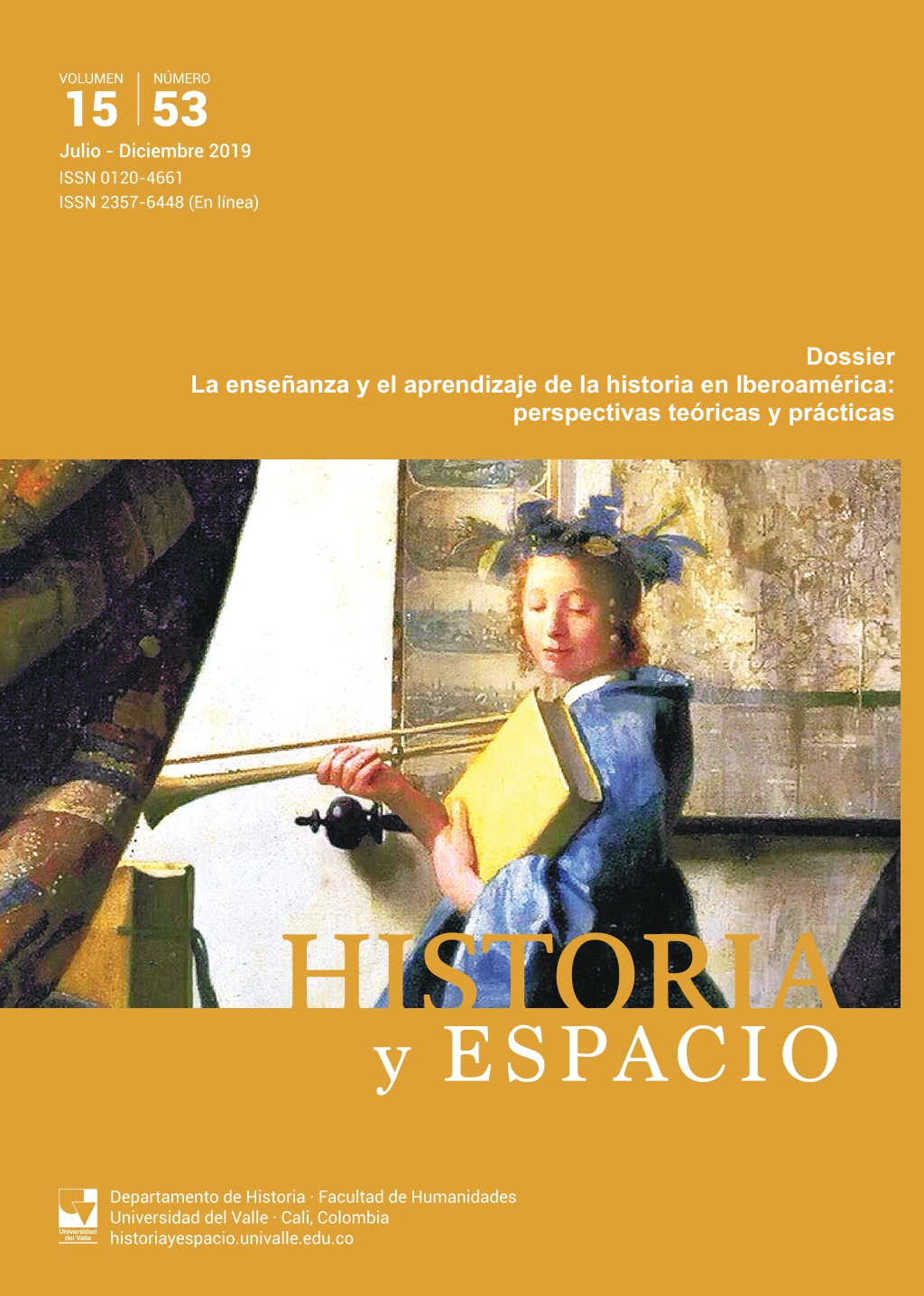School, Historiography and the Nation. The Representation of both the Cases of Francisco Pizarro and the Conquest of Spain
Main Article Content
“Spanish Conquest of Peru” (or “The Invansion of Spain”) is currently one of the most crucial issues in Peruvian History taught at school. Francisco Pizarro is the main character in this episode, commonly situated between a pro-hispanic discourse and an unflagging anti-hispanic speech in Peruvian historiography. This gave place, to an extended degree, to historical representations in school texts; thus images about Pizarro and Conquest are constantly being reproduced through educative spaces such as the Peruvian schools. Based on this point, moreover, we could distinguish different conceptions about what is a nation, from the perspective of both historians and school text authors. Pizarro is known, on one hand, as a founding character of both Lima and Peru and the very first initiator of what is called “miscegenation” and, on the other hand, as the person who destroys the prominent Inca civilization and the genocide of the “true nation”, that is, the indigenous nation. Therefore, we could make an approach, based on school texts of divulgation and their authors, to various historical conflicts, either to the “official Creole history” or to the national-indigenous versions which contains a lot of criticism of the first view. Finally, this article also scrutinizes the changes throughout Peruvian historiography and, hence, the new historical narratives came out in the very few last decades.
- Peruvian historiography
- Historical representations
- Spanish Conquest of Peru
- Francisco Pizarro
- School texts divulgation
- Nation
Alvar, Jaime y José María Blázquez. Héroes y antihéroes en la antigüedad clásica. Madrid: Editorial Cátedra, 1997.
Amat Olazábal, Hernán. “En memoria de Edmundo Guillén Guillén (1921-2005)”. Revista de Investigaciones Sociales, año X, n.° 16 (2006): 563-566, http://sisbib.unmsm.edu.pe/bibvirtualdata/publicaciones/inv_sociales/N16_2006/a25.pdf
Cappa Manescau, Ricardo. “Estudios críticos acerca de la dominación española en América. Colón y los españoles”. Biblioteca Virtual Miguel de Cervantes. Consultado 26 de junio de 2018. http://www.cervantesvirtual.com/obra-visor/estudios-criticos-acerca-de-la-dominacion-espanola-en-america-i-colon-y-los-espanoles--0/html/0020ac36-82b2-11df-acc7-002185ce6064_11.html#I_38_
Chueca Martínez, Felipe. “Gustavo Pons Muzzo, Historia del Perú y textos escolares”. Boletín del Instituto Riva-Agüero, n,º 1 (1952): 618-624, http://revistas.pucp.edu.pe/index.php/boletinira/article/view/11036/11548
Del Busto Duthurburu, José Antonio. Pizarro. Lima: Petroperú, 2001.
Del Busto Duthurburu, José Antonio. “Lo que el Perú tiene por la presencia de Pizarro”. Studium Veritatis, año 4, n.º 6-7 (2005): 75-84, http://www.ucss.edu.pe/images/fondo-editorial/revistas/studium-veritatis/Studium%20Veritatis%206-7.pdf DOI: https://doi.org/10.35626/sv.6-7.2005.211
Guevara Espinoza, Antonio. Historia del Perú y del mundo. 2.º año de educación secundaria común. Lima: Librería Studium, 1976.
Guillén Guillén, Edmundo. “Grandeza, tragedia y destino del Perú andino. La república criolla agoniza y ha llegado el tiempo de instaurar la república andina”. Entrevistado por Miguel Guzmán. Consultado 29 juniode 2018, http://miguel.guzman.free.fr/Runapacha/guillenentrevista.pdf
Huamantinco Cisneros, Francisco. Juan José Vega. Una historia de vida. Lima: Editorial San Marcos, 2013.
Lorente, Sebastián. Pensamientos sobre el Perú. Lima: Universidad Nacional Mayor de San Marcos, 1967 [1855].
Méndez Gastelumendi, Cecilia. Incas sí, indios no: apuntes para el estudio del nacionalismo criollo en el Perú. Lima: Instituto de Estudios Peruanos (IEP), 1995.
Oliart Sotomayor, Patricia y Gonzalo Portocarrero Maisch. El Perú desde la escuela. Lima: Instituto de Apoyo Agrario, 1989.
Porras Barrenechea, Raúl. Pizarro, el fundador. Lima: Universidad Ricardo Palma, 2016.
Prescott, Guillermo. Historia de la conquista del Perú. Lima: Editorial Universo, 1972 [1847].
Quiroz Chueca, Francisco. De la patria a la nación. Historiografía peruana desde Garcilaso hasta la era del guano. Lima: Fondo Editorial de la Asamblea Nacional de Rectores, 2012.
Riva Agüero y Osma, José. Obras completas VI. Estudios de historia peruana. La Conquista y el Virreinato. Lima: Pontificia Universidad Católica del Perú, 1968.
Robles Ortiz, Elmer. “Los textos escolares de historia del Perú: hechos iniciales de la invasión y conquista”. Nova et Vetera vol. 20, n.º 64 (2011): 55-78. DOI: https://doi.org/10.22431/25005103.169
Sivirichi Tapia, Atilio. Compendio de historia del Perú. Lima: Editorial Peruana, 1936.
Vega Bello, Juan José. La Guerra de los viracochas. Lima: Populibros peruanos, 1974.
Vich Flórez, Víctor. El fantasma de Francisco Pizarro: debates nacionalistas en torno a una estatua. Editado por Claudia Rosas, El odio y el perdón en el Perú. Lima: Fondo Editorial Pontificia Universidad Católica del Perú, 2009. DOI: https://doi.org/10.18800/9789972428999.011
Wiesse, Carlos. “La conquista del Perú”. Tesis para optar al título de doctor. Universidad Mayor de San Marcos, 1887.





